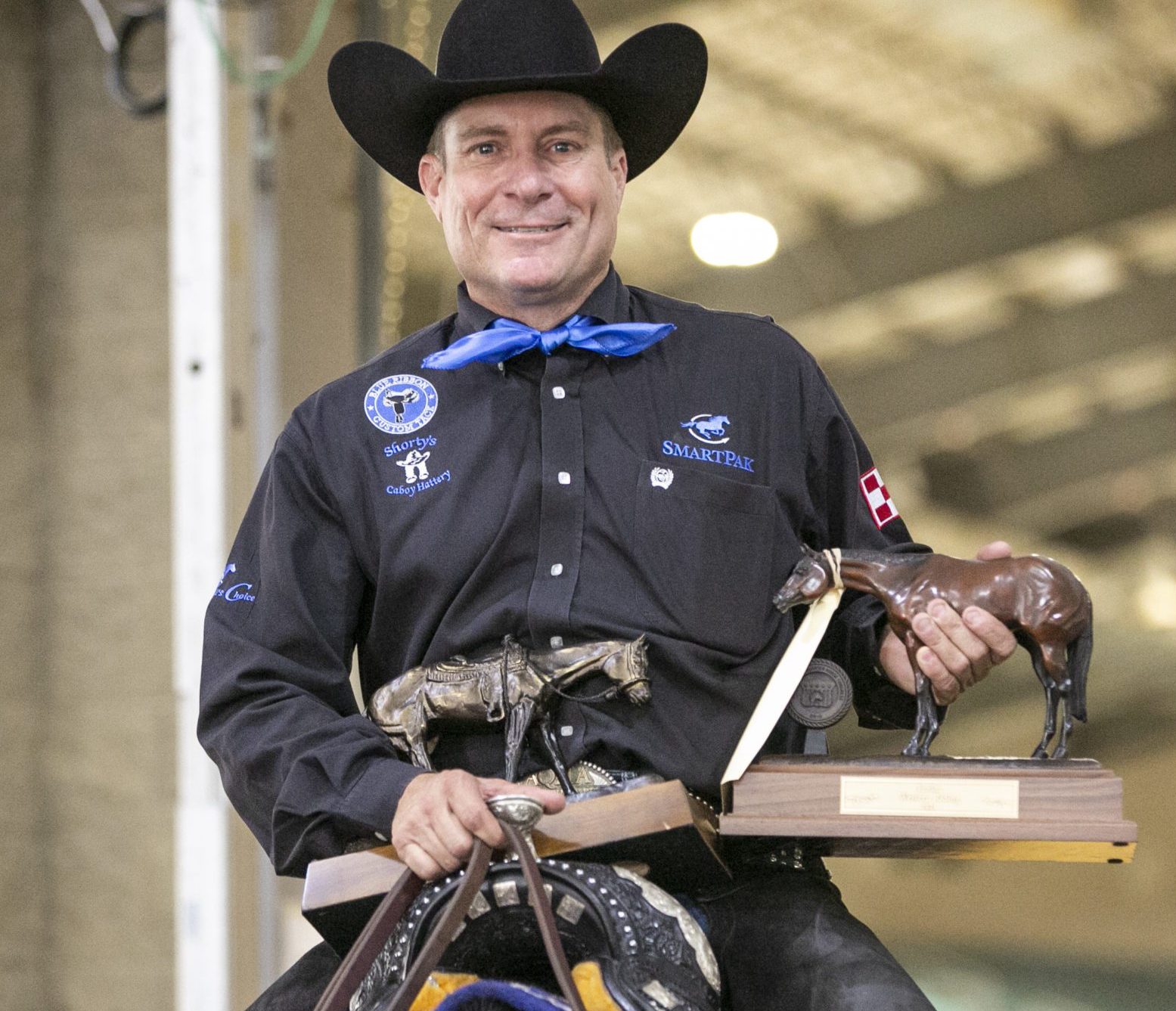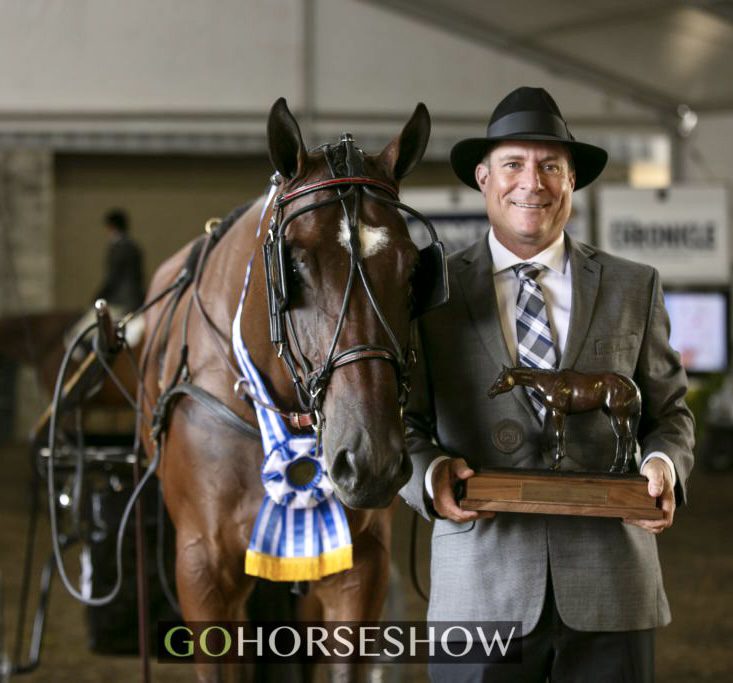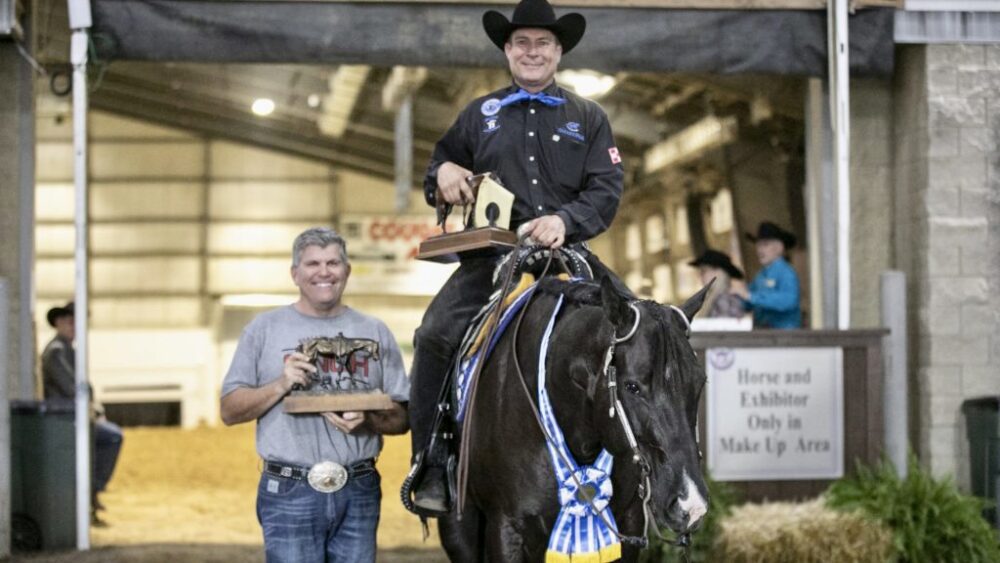We previously addressed when it’s appropriate to change your plans with your horse and when to move on from your horse. However, this sport is a complex one that not only requires a successful relationship between the rider and animal, but also requires a positive relationship between the owner and trainer.
While relationships with animals can be simple, interpersonal relationships are far more complex. It tends to be more common for an owner to decide to leave a trainer, but we wanted to get a trainer’s take on when they should speak up and move on from a client.
We spoke with multiple AQHA World and Congress Champion trainer Charlie Cole of Highpoint Performance Horses for his input on signs that it is time for a trainer to walk away from a client.
You Aren’t Being Compensated for Your Work
Although trainers tend to enter the business because they love horses, they often leave the business because they simply can’t make a living out of it.
 “For years, when Jason and I were starting out, we carried several clients by giving them flexible payment options in hopes of keeping them and certain horses in our program,” Cole recalls. “However, if you can’t pay your bills because you are letting a client pay when it works for them, then it’s time to let them go because chances are, the situation will only worsen.”
“For years, when Jason and I were starting out, we carried several clients by giving them flexible payment options in hopes of keeping them and certain horses in our program,” Cole recalls. “However, if you can’t pay your bills because you are letting a client pay when it works for them, then it’s time to let them go because chances are, the situation will only worsen.”
Charlie says it all comes down to the following: “It is important to make sure you are billing a client fairly and properly for work you are actually doing. If they aren’t paying you in a timely manner despite this and it’s not a one-time issue, then it is time to stick up for your business and ask them to go elsewhere. You may take a loss in the moment, but you can’t loan your services forever and remain in operation.”
Your Client Won’t Commit to a Plan
When young trainers are starting out, a lot of their income comes from travel to shows (hauls, show fees, etc.). Additionally, many of the clients rely on splitting fees between participants to make shows more affordable on their end. Therefore, when a client commits to going to events, and then frequently backs out, it can cause financial issues for both the trainer and other barn-mates.
 “Sometimes there is a legitimate reason for backing out of a show or event. Life happens and, as a trainer, you need to be able to understand that horse showing is a hobby for your clients. When things get difficult for owners, discretionary income for showing will be affected,” Cole explains.
“Sometimes there is a legitimate reason for backing out of a show or event. Life happens and, as a trainer, you need to be able to understand that horse showing is a hobby for your clients. When things get difficult for owners, discretionary income for showing will be affected,” Cole explains.
“If you have a client that keeps backing out after committing to plans with their horse, it’s time for you to have a chat with them about their real goals with their horse,” he advises.
“You need to make sure the client’s goals in the horse show industry match your goals as a trainer and a barn. If they don’t line up, then it’s time to part ways for everyone’s sake. Allow your client to find a barn that better meets their needs and allow yourself to cut ties with someone who isn’t reliable.”
Your Client is Having a Negative Impact on Your Work Environment
Every barn has its own “culture,” so to speak, and Cole says it is really important to decide what barn culture you want to promote as a trainer and foster that.
 “Some barns function like families, while others are more formal, like workplaces. It is important to protect whatever environment you are trying to create by making sure that new clients ‘fit’ your program.”
“Some barns function like families, while others are more formal, like workplaces. It is important to protect whatever environment you are trying to create by making sure that new clients ‘fit’ your program.”
He reminds us that communication with clients is critical to creating a culture where everyone, including yourself, is happy. “One thing I really try to teach my clients is that, if they’re unhappy about something, they should only discuss that with Jason and me. When you have people that go to other clients to complain, their issues spread like wildfire.”
Charlie says that trainers should always begin looking at an issue with some self-reflection. “You need to ask yourself whether the issue is being caused by something you are doing.”
However, not all problems are the fault of the trainer. Indeed, there are some people who seem to like dysfunction and cause drama wherever they go. While they are few and far between, they do exist and you need to recognize that and not allow those behaviors to take hold in your barn.
Your Client is Unrealistic
Again, Cole emphasizes the need for good communication between trainers and clients to try to avoid many of the problems that damage the relationship beyond repair.
“I make it a point to clearly communicate a plan with my clients and give them an honest assessment of their horse and what they are capable of with their horse,” he explains.
 “If you and the client have (1) gone over the goals, (2) agreed on those goals, (3) made sure they were realistic, and (4) you are making progress toward achieving those goals, then there shouldn’t be an issue.”
“If you and the client have (1) gone over the goals, (2) agreed on those goals, (3) made sure they were realistic, and (4) you are making progress toward achieving those goals, then there shouldn’t be an issue.”
“However, sometimes clients struggle to give up on a horse when you are telling them they aren’t capable of meeting the client’s lofty goals. We’ve had owners push for more training and more time on a horse that we know just isn’t going to make it. While it’s possible the client is right and the animal just needs more time, more often than not, the trainer’s assessment is correct and this can create problems.”
“I’d remind young trainers that YOU are the trainer and the expert and not the client,” Cole encourages. “If you allow the client to drive the bus and set the expectations for the horse, you will likely find yourself in a position where you’re unable to deliver what the client wants and they will just sink money into an animal and then blame you for the failures.”
If a client cannot accept your assessment of their horse and be realistic with their goals, then you are better off letting that client go elsewhere.
Your Client Oversteps too Many Boundaries
Horse training and care is an around-the-clock business. However, Cole cautions that, while trainers are there for the horse at all hours, allowing your clients to think you are available to them at all hours can create serious issues.

Charlie recommends, “It is really important to set your business hours and stick to them. I try to respond to text messages when they come, but I cannot always take a call or schedule a last-minute lesson.”
“As trainers, it is important to provide good customer service because that will help you retain good clients, but you also need to make sure that your clients respect your boundaries. This will help protect yourself from burnout and protect your other clients by having one person dominating your time.”
If a client isn’t consistently respecting your boundaries despite your efforts to communicate the issue, then it is likely time to say goodbye.
***
Cole’s most consistent piece of advice for all trainers is that communication forms the foundation of your relationship with your client. “If you clearly communicate with the client regarding goals, pricing, the horse’s abilities, and any issues that arise along the way, the chances of needing to ask a client to leave are very slim.”
“If the relationship has broken down beyond repair, it is ok to allow yourself to be the one to say it’s time to part ways,” Charlie advises. “The hardest part for me to accept as a young trainer was feeling like clients were irreplaceable. But, it never failed that, when a client who didn’t fit would leave, a better client for our program would come along…and it’s served us very well over the years.”
Ultimately, while this advice is shared from a trainer’s perspective, it provides some beneficial tips to clients on how not to behave in order to ensure a positive relationship with your trainer.
CLICK HERE to read part one of this series, ‘Knowing When To Quit Part 1: When to Change Plans with Your Horse – with Carly Parks’
CLICK HERE to read part two of this series, ‘Knowing When To Quit Part 2: When to Move on from Your Horse – with Amanda Ringer’









